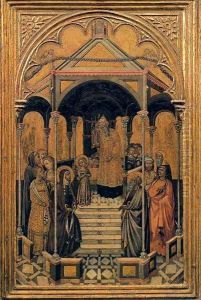Niccolo Di Buonaccorso Paintings
Niccolò di Buonaccorso was an Italian painter active during the late 14th century, primarily in Siena. Born in 1348, his career unfolded during a period rich in artistic innovation and characterized by the Gothic style's evolution. Though not as widely recognized as some of his contemporaries, Niccolò's work contributes to the understanding of Sienese painting's development during this era. His artistic endeavors are situated within the context of the Sienese School, which was marked by a distinctive style that emphasized grace, elegance, and a preference for more decorative and linear qualities compared to the Florentine tradition. Niccolò's paintings, characterized by their delicate coloration and intricate details, exemplify the refined aesthetics of this school.
Niccolò di Buonaccorso's career is documented through a limited number of signed or attributed works, making a comprehensive assessment of his oeuvre challenging. However, existing pieces attributed to him exhibit a mastery of the Gothic style, with particular attention to the emotional expressions of his subjects and the detailed treatment of their attire and surroundings. One of his most notable works includes a Madonna and Child, which showcases his ability to imbue religious figures with a sense of tender humanity, a hallmark of Sienese art.
Despite the scarcity of personal details about Niccolò's life, it is known that he was active in a vibrant artistic community, contributing to the cultural and visual landscape of Siena. His works were likely influential among his peers and successors, helping to perpetuate the distinctive style of the Sienese School throughout the late 14th and early 15th centuries. Niccolò di Buonaccorso's death in 1388 marked the end of a career that, while not extensively documented, played a role in the rich tapestry of Italian Gothic art. Through his surviving works, Niccolò's legacy persists as a testament to the nuanced and delicate beauty characteristic of Sienese painting during this period.

